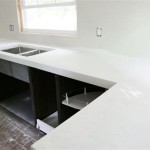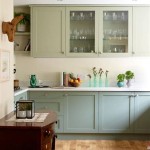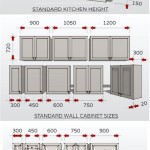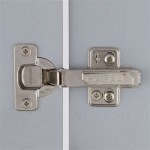What Kind of Paint to Use for Kitchen Cabinets
Transforming the look of your kitchen often begins with the cabinets. A fresh coat of paint can revitalize tired cabinetry, creating a modern and stylish space. However, selecting the right paint for kitchen cabinets is crucial for achieving a durable and long-lasting finish. With myriad paint options available, choosing the best one can be daunting. This article will guide you through the different types of paint suitable for kitchen cabinets, highlighting their properties and considerations for choosing the right one for your project.
Acrylic Latex Paint
Acrylic latex paint is a popular choice for kitchen cabinets due to its versatility, durability, and ease of application. This water-based paint boasts several advantages, including:
- Easy Clean-up: Acrylic latex paints are water-based, making cleanup a breeze with soap and water. No harsh solvents are needed, making them a more environmentally friendly option.
- Fast Drying Time: Acrylic latex paints dry quickly, allowing for multiple coats in a single day, speeding up the painting process.
- Low Odor: Compared to oil-based paints, acrylic latex paints have a low odor, making them ideal for indoor projects where fumes can be a concern.
- Durability: Acrylic latex paints are generally durable, offering good resistance to scuffs, scratches, and moisture. However, they may not be as durable as oil-based paints, particularly in high-traffic areas.
When considering acrylic latex paint for kitchen cabinets, consider the following:
- Priming: Priming is essential for achieving a smooth and even finish with acrylic latex paint. Choose a primer specifically designed for cabinets, ensuring good adhesion and preventing the underlying wood grain from showing through.
- Finish: Acrylic latex paints are available in various finishes, including matte, eggshell, satin, semi-gloss, and gloss. Matte finishes offer a flat appearance, while gloss finishes provide a more reflective and durable surface. Select a finish that complements your kitchen's style and meets your desired level of sheen.
- Durability: For high-traffic kitchens, opt for a durable acrylic latex paint formula designed for cabinets or trim. These paints often boast increased resistance to scratches, stains, and moisture.
Oil-Based Paint
Oil-based paints have been a traditional choice for kitchen cabinets due to their excellent durability and resistance to moisture. However, they require a longer drying time and have a strong odor, which may make them less desirable for some homeowners. Oil-based paints offer the following benefits:
- Exceptional Durability: Oil-based paints are known for their outstanding durability, resisting scratches, moisture, and stains better than acrylic latex paints. They are a robust choice for high-traffic kitchens where cabinets are subjected to frequent use and potential damage.
- Self-Leveling Properties: Oil-based paints tend to self-level, creating a smooth and even finish. This characteristic is particularly advantageous for cabinets with imperfections or uneven surfaces.
- Moisture Resistance: When properly applied, oil-based paints offer excellent resistance to moisture, making them suitable for areas prone to humidity or spills.
Consider the following factors when choosing oil-based paint for kitchen cabinets:
- Drying Time: Oil-based paints require longer drying times compared to acrylic latex paints. This can extend the project timeline and necessitate careful planning to avoid dust or other contaminants settling on the wet paint.
- Strong Odor: Oil-based paints have a distinct odor that can linger for several days. Ensure adequate ventilation and consider using a fan to minimize fumes during and after painting.
- Cleanup: Cleanup with oil-based paint requires mineral spirits or other solvents, which can be harsh and require proper disposal. This can be a drawback for environmentally conscious homeowners.
Epoxy Paint
Epoxy paint is a durable and robust option for kitchen cabinets, particularly those exposed to high levels of wear and tear. Epoxy paints are typically two-part systems, consisting of a resin and a hardener that are mixed together before application. Their key advantages include:
- Extreme Durability: Epoxy paints are known for their extreme durability, offering excellent resistance to scratches, stains, and moisture. They are ideal for high-traffic kitchens or areas where cabinets are subjected to heavy use or frequent cleaning.
- Chemical Resistance: Epoxy paints are highly resistant to chemicals, making them excellent for areas where cabinets may come into contact with acidic or alkaline substances.
- Seamless Finish: Epoxy paints can create a seamless and durable finish, filling in any imperfections or gaps in the cabinet surfaces. This characteristic is particularly useful for older cabinets that may have minor scratches or dents.
When considering epoxy paint for your kitchen cabinets, keep the following in mind:
- Application: Applying epoxy paint requires precision and care. It is a two-part system that has a limited working time, meaning you must work quickly and efficiently to achieve a smooth and even finish.
- Preparation: Proper surface preparation is crucial for epoxy paints to adhere effectively. Cabinets must be thoroughly cleaned, sanded, and primed before applying the epoxy.
- Cost: Epoxy paints tend to be more expensive than acrylic latex or oil-based paints. Consider the cost versus the benefits of their extreme durability and resistance.
The choice of paint for kitchen cabinets ultimately depends on your specific needs and preferences. Consider the following factors when making your decision:
- Budget: Acrylic latex paints tend to be the most affordable option, followed by oil-based paints and then epoxy paints.
- Durability: If you need the most durable paint, epoxy paint is the best choice. Oil-based paints offer good durability, while acrylic latex paints provide a balance of durability and ease of use.
- Ease of Application: Acrylic latex paints are generally the easiest to apply, while epoxy paints demand more precision and preparation.
- Odor: Acrylic latex paints have a low odor, while oil-based paints have a strong odor that may be a concern for indoor projects.
For a professional and durable finish, consult with a paint specialist who can provide guidance and recommendations specifically tailored to your kitchen cabinets and personal requirements.

How To Prep And Paint Kitchen Cabinets Lowe S

How To Paint Kitchen Cabinets In 7 Simple Steps

What Kind Of Paint To Use On Cabinets

How To Paint Kitchen Cabinets In 7 Simple Steps

Best Paint For Your Next Cabinet Project The Home Depot

How To Paint Kitchen Cabinets A Step By Guide Confessions Of Serial Do It Yourselfer

What Is The Best Paint For Kitchen Cabinets Heritage Custom Painting

How To Paint Kitchen Cabinets Forbes Home

Avoid These Mistakes How To Paint Cabinets That Are Already Painted Grace In My Space

Best Paint For Kitchen Cabinets 24 Brands Blind Tested 2024
Related Posts








